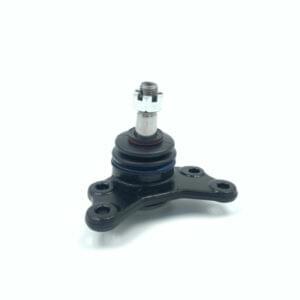The key features of a steering ball joint that enhance load distribution are:
- Ball and Socket Design: The steering ball joint price has a ball stud that fits into a socket housing. This ball and socket design allows for a wide range of angular movement, which helps distribute loads more evenly across the joint.
- Bearing Surface: The ball stud sits on a bearing surface, typically made of hardened steel or a durable composite material. This bearing surface provides a smooth, low-friction interface that helps distribute loads and reduce wear.
- Preload: The ball joint assembly is designed with a controlled amount of preload, which helps maintain the proper fit and contact between the ball stud and the socket. This preload ensures even distribution of loads across the bearing surface.
- Tight Tolerances: Steering ball joints are manufactured with tight tolerances to minimize play and ensure a precise fit between the ball stud and the socket. This precise fit helps distribute loads more evenly and reduces the risk of premature wear.
- Lubrication: Steering ball joints are typically lubricated with a high-quality grease or oil to reduce friction and wear. The lubrication helps distribute the loads more evenly across the bearing surfaces.
- Dust Boots: Many steering ball joints are equipped with dust boots or seals that help protect the joint from contamination and moisture. This protection helps maintain the integrity of the lubrication and the overall load-bearing capabilities of the joint.
By incorporating these key features, steering ball joints are designed to distribute the various loads and forces encountered during vehicle operation, such as steering input, suspension loads, and road shocks, more evenly across the joint. This enhanced load distribution helps to improve the overall durability and service life of the steering ball joint.
